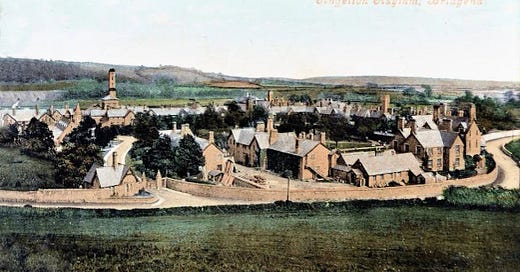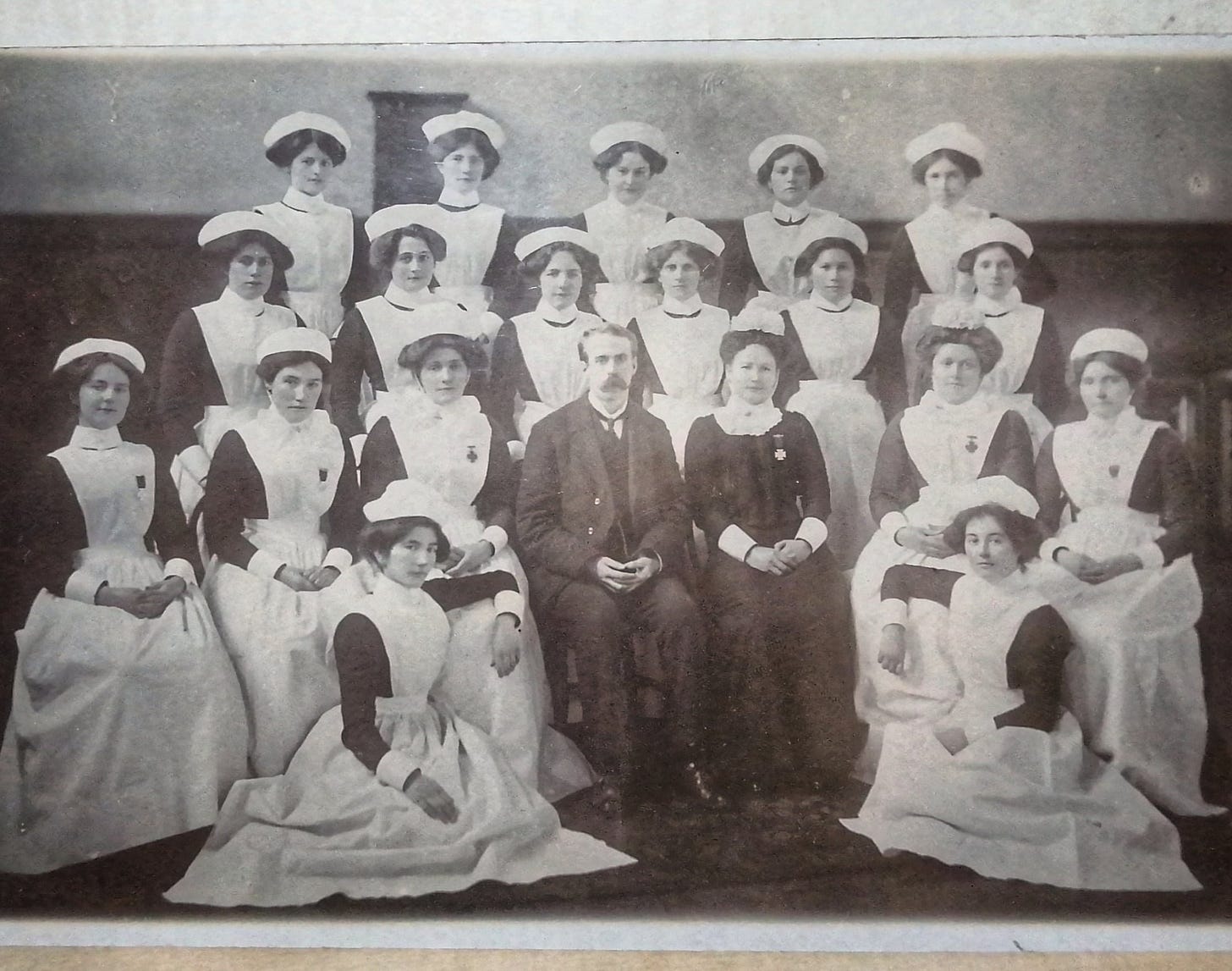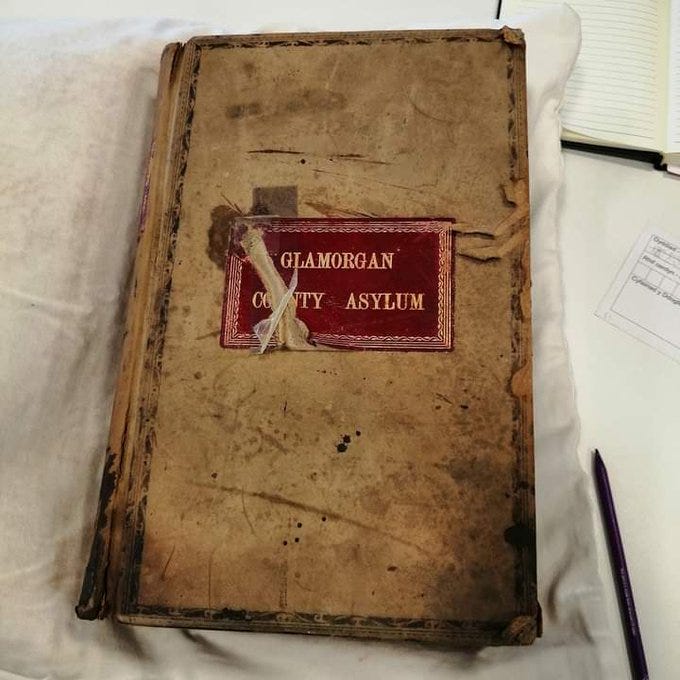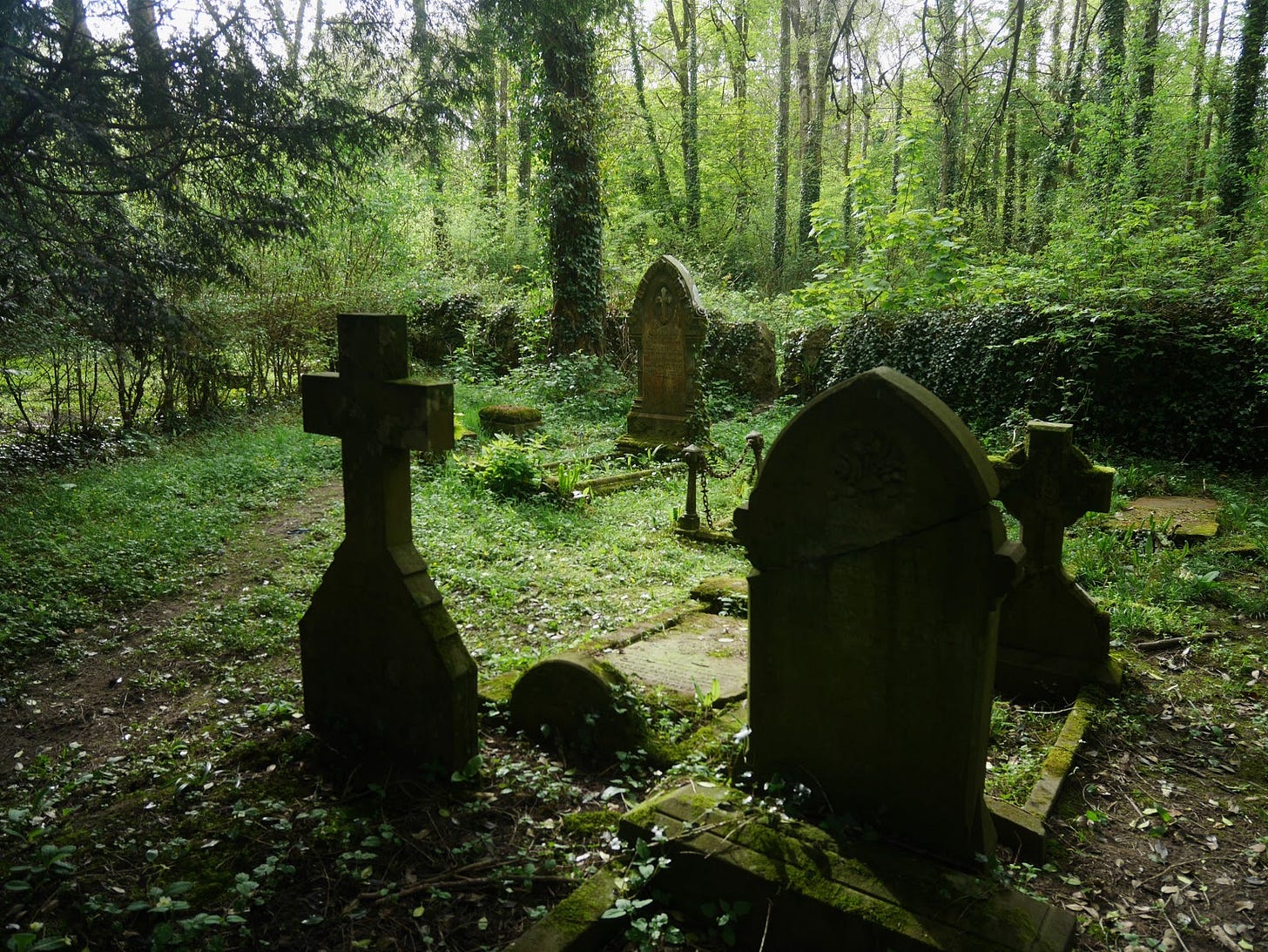Myths & Misconceptions | Glamorgan County Lunatic Asylum
In this blogpost I attempt to debunk the myths and misconceptions of life in Glamorgan County Lunatic Asylum.
Content Warning: Some people may find the terminology used in this article upsetting.
Angelton Asylum was established in 1864. It was the first public asylum in South Wales. Before the opening of Angelton Asylum, most pauper lunatic patients were sent to Vernon House Private Asylum in Briton Ferry.
The first patients from Vernon House were admitted on the 4th of November 1864. Most of these patients were the elderly who had been in Vernon House since its establishment in 1843. The asylum accommodated men, women and up until the early 1900s children.
Angleton Asylum was built to accommodate 350 patients. For the most part, the asylum was self-sufficient. It had its own water and gas supply. It had various workshops, a bakehouse, an engine house, a fully working farm and laundry.
Dr Yellowlees of Edinburgh was the first Medical Superintendent of Angelton Asylum.
His ethos was: “To distract from morbid thoughts, by occupation or amusement, and present new and healthy thoughts. To soothe by kindness, control by tact and firmness, invite confidence and make the patients' lives as comfortable and happy as possible.”
He promoted the idea that patients should be admitted to the asylum as soon as they become ill - the earlier the intervention, the more chance of recovery. He also acknowledged that this wasn't done because many people were afraid of the stigma of being in an institution.
Life in the Asylum
The wards were furnished with horse-hair beds, plants, wallpaper and photographs. Each ward had two water closets, two baths and a changing room attached.
Patients lived on a diet of bread, Irish stew, tea and vegetables. Two days out of the week, they were treated to pudding or chocolate.
Patients were encouraged to work in the workshops, garden, help on the farm and sew to occupy their minds. As an incentive, each patient who did this was given an extra allowance of tea, tobacco or snuff.
The patients were encouraged to socialise with each other and the staff. They had a degree of freedom that many in other asylums did not have. The asylum had a cricket team, rugby-football team and brass band - all were made up of patients and staff. There were dances every Saturday and concerts during the week.
Patients had access to large day rooms filled with books, music, cards and the like. Dr Yellowlees purchased aquariums and goldfish for the day rooms. He later purchased bird cages and birds, a Zoetrope and musical instruments.
After the departure of Dr Yellowlees, and as a result of frequent overcrowding, the no-restraint rule was overturned. The restraint register for the asylum details many instances of this. Drugs such as Digitalis and Chloroform were used to subdue patients who were seen as a nuisance. Straight jackets, padded cells and wet sheets were used for violent patients.
Parc Gwyllt Asylum opened in 1887 to accommodate incurable patients. Thus The Glamorgan County Lunatic Asylum was formed. At its highest, there were (collectively) over 2000 patients at Glamorgan County Lunatic Asylum.
By this time, it was compulsory for patients to have their photographs taken (usually within one week of admission) to accompany their case files. Long-stay patients/re-admitted would usually have more than one photograph taken. This was to chart their physical improvement or physical deterioration.
Myths and Misconceptions
Reasons for Admission
For the most part, it was difficult (especially in the early years) for someone to be admitted to the asylum. A patient usually came from the workhouse and needed the signatures of two medical officers to certify that they were insane. In many cases, if a patient was admitted more than two or three times, they were deemed incurable.
Frequent reasons for admission include Disappointment in Love, Money Worries, Epilepsy, Postpartum Psychosis, Religious Mania, Grief, Syphilis and Puberty.
Here are a few examples from the case files:
A young woman suffering from “acute mania caused by puberty” was admitted to the asylum in 1900. She had Down Syndrome. It was believed that her disability was caused by “her mother being frightened during pregnancy.” It is interesting to note that her admission had nothing to do with her having Down Syndrome, it was solely because of puberty.
A young man suffering from “acute mania” was admitted to the asylum in 1900. He believed that “Lucifer had been captured by General Baden Powell.”
A young woman suffering from “acute mania” caused my grief and was admitted to the asylum after becoming “unmanageable” following the death of her father.
I recently discovered that my uncle was admitted to the asylum in 1889. He suffered from “manic delusions” caused by a loss of money. He believed that he was being followed by men and that they were poisoning him.
“The Demented King.”
One of the longest residents of the asylum was a gentleman known as the “Demented King.” He was admitted to Vernon House at the age of 21 suffering from the delusion that he was the “King of Swansea.” He was transferred to Angelton Asylum in 1864. His case was an unusual but somewhat heartwarming one.
He was the coachman for the medical superintendent and was also in charge of the horses and stables. He became a porter in the dining hall and welcomed people at the front door of the asylum. After spending 46 years in the asylum system, he died in 1892. He was so beloved by the staff that they paid for his headstone and he was buried in the staff section of the asylum burial ground.
Unmarried Mothers
The myth of unwed pregnant mothers being admitted to the asylum during the Victorian age is a common misconception. I have been through hundreds of casefiles and the women who were pregnant were there as a result of Pre-natal Psychosis, Puerperal Psychosis or other pregnancy-related illnesses. The majority were married and left the asylum once they had given birth and recovered.
During this time, unwed mothers were more likely to be sent to the workhouse or one of many Roman Catholic Laundries or Houses for Wayward Girls in the area.
One case involved a young woman who was suffering from mania caused by Pre-natal Psychosis. She was admitted to the asylum when she was seven months pregnant. She gave birth in the asylum but sadly her child died. She was soon discharged from the asylum as recovered.
Sometimes women were re-admitted to the asylum after the birth of their other children. One tragic case of Puerperal Psychosis involved a young woman who had previously been in the asylum. She was later re-admitted following an episode of Puerperal Psychosis in which she killed her child. She spent the rest of her life in the asylum.
Abandoned Patients
It is widely believed that when patients were admitted to the asylum, they were abandoned by their families. Although there were cases where this happened, for the most part, this is untrue. At the Glamorgan County Lunatic Asylum, the day for visitors was a Saturday.
The visitor books show that many of the patients were visited by family and friends quite frequently. As well as visiting, patients and their families communicated via postcards and letters.
Another commonly held belief is that patients were abandoned in death. For the most part, this, again, is untrue. When a patient died, their next of kin were contacted as soon as possible. The families were given the option to “remove” the deceased for private burial but in most cases, the families of the deceased couldn't afford to bury their loved one.
The burials were marked with crosses made of iron (or sometimes wood) and each burial plot was of multiple occupancy. This was common in burial grounds attached to institutions. Glamorgan County Lunatic Asylum itself had three burial grounds. The original burial ground at Angelton Asylum (now Glanrhyd) had a section for members of staff and their families. Their headstones can still be seen today.









Iirc, the law that allowed women to be locked up for 'moral deficiency' (i.e. repeated illegitimate pregnancy) was introduced in 1911 or 1912. I think it gets conflated with the nineteenth century because it SOUNDS so Dickensian!
Great blog!
This was really interesting, do you know if the children who were in the asylum were admitted due to a health issue for themselves or because their parents were and as their children they had to be admitted too?